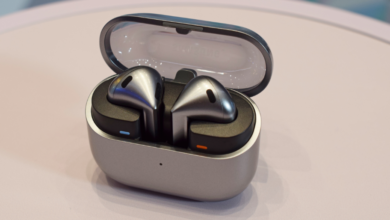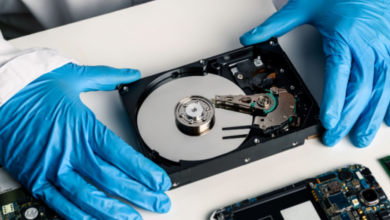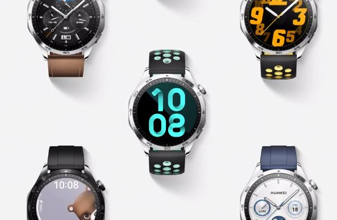How Does a Wearable Watch Help with Stress Relief?

Wearable watches have become important tools in managing stress. They’re not just for tracking steps or monitoring heart rates anymore. These clever gadgets now focus on stress relief. By using advanced sensors, they detect stress levels and provide users with immediate feedback. This allows for timely intervention. The data collected over time helps users understand stress patterns. With guided techniques, these watches offer practical ways to manage stress effectively. They support relaxation and encourage mindfulness, promoting overall well-being. Throughout this article, we will explore how wearable watches utilize technology to alleviate stress, making daily life more manageable and peaceful.
Real-Time Stress Detection
Wearable watches continuously monitor stress through advanced technology. They allow users to stay aware of their stress levels throughout the day.
Biometric Sensors and Algorithms
Wearable watches utilize a variety of biometric sensors to monitor stress indicators. These sensors track physiological data like heart rate variability (HRV), skin temperature, and electrodermal activity, providing a comprehensive view of the body’s stress levels. Sophisticated algorithms process this data to identify patterns associated with stress. For instance, a sudden increase in heart rate coupled with a rise in skin temperature might suggest heightened stress levels. The watch then interprets these signals, converting them into actionable insights for the user. By analyzing this data, wearable watches offer a personalized understanding of stress, helping users to identify the physical manifestations of stress in real time.
Immediate Alerts & Awareness
Wearable watches are designed to keep users aware of their stress levels, enhancing their ability to manage stress promptly. When the sensors detect elevated stress indicators, the watch sends immediate alerts to the wearer. These alerts might take the form of gentle vibrations or notifications. Such real-time feedback raises awareness, prompting users to take a moment to assess their current state and engage in stress-reducing activities. Immediate alerts act as reminders to breathe deeply, take breaks, or engage in brief relaxation exercises. By increasing awareness, these alerts help users address stress before it escalates into more significant health issues.
Logging & Visualizing Stress Patterns
One of the key features of wearable watches is their ability to log and visualize stress patterns. Over time, these devices collect data that users can access in the form of charts or graphs within a companion app. Users can track fluctuations in their stress levels throughout days, weeks, or months. This visualization helps users identify potential triggers and stressors. By logging and representing this data visually, wearable watches empower users to make informed decisions about lifestyle changes. Recognizing patterns allows for proactive management, enabling individuals to adjust routines and environments to minimize stress exposure.
Guided Relief Tools
Integrated relief tools in wearable watches offer guided support to alleviate stress, making stress management more accessible and convenient.
Breathing Exercises & Mindfulness Prompts
Wearable watches often include guided breathing exercises and mindfulness prompts aimed at reducing stress. When stress levels rise, the watch can guide users through calming breathing techniques. Visual or vibrational cues pace the breathing, aiding relaxation. Additionally, mindfulness prompts encourage users to pause and engage in moments of reflection or gratitude. These exercises are designed to create a sense of calm and focus, fostering mental clarity and emotional balance. By incorporating these guided tools, wearable watches not only help lower immediate stress but also encourage the development of long-term mindfulness habits.
Sleep & Recovery Support
Wearable watches play a crucial role in supporting sleep and recovery, both essential for stress management. By monitoring sleep patterns, these devices provide insights into sleep quality and duration. They can detect disturbances, such as restless movements or changes in heart rate, offering recommendations for improving sleep hygiene. Some watches also include features like gentle wake alarms or bedtime reminders. Understanding sleep data empowers users to prioritize rest and recovery, essential components of stress relief. By helping users establish healthy sleep routines, wearable watches contribute to overall stress reduction and improved mental health.
See also: How modern tech is revolutionizing cargo inspection and security
Long-Term Insight & Behavior Change
Wearable watches offer valuable long-term insights, enabling users to transform their stress responses and make sustainable behavior changes.
Resilience Tracking & Stress Trends
Wearable watches are equipped to track resilience and observe stress trends over extended periods. By analyzing accumulated data, users can identify recurring patterns and stressors. This information helps to build resilience by recognizing the triggers that lead to stress. With this awareness, individuals can develop coping strategies to manage stress more effectively. Monitoring stress trends also highlights progress in stress management efforts, encouraging continued use of healthy habits. This feature not only enhances self-awareness but also promotes long-term stress resilience. By providing a comprehensive view of stress patterns, wearable watches empower users to cultivate a more balanced lifestyle.
Self-Reflection & Actionable Visuals
Wearable watches facilitate self-reflection by presenting actionable visuals that summarize stress data. Users can view detailed reports that depict stress responses over time, allowing them to connect emotional states with external factors. This visual representation aids in identifying stress-inducing situations or environments. Armed with this knowledge, users can reflect on their reactions and consider adjustments to daily routines or thought processes. The visual data serves catalyzes change, motivating individuals to engage in practices that promote stress reduction and emotional well-being. By encouraging thoughtful self-reflection, wearable watches support personal growth and stress management.
Integration with Wellness Routines
Wearable watches seamlessly integrate with various wellness routines, enhancing overall stress management strategies. These watches often connect with other health and fitness apps, allowing users to sync their stress data with exercise, nutrition, or meditation programs. This integration offers a holistic view of well-being, encouraging a balanced approach to stress relief. By aligning stress management with physical activity and nutrition, users can make informed lifestyle choices that support mental health. This cohesive approach ensures that stress management becomes an integral part of daily routines, fostering sustainable behavior changes. Wearable watches serve as partners in promoting a stress-resilient lifestyle.

Conclusion
Wearable watches offer a comprehensive approach to stress management through real-time tracking, guided relief tools, and long-term insights. Whether you’re seeking advanced tracking or guided relaxation features, devices like the watch gt6 stand out as reliable companions for stress relief. By detecting stress via biometric data, these devices provide immediate alerts, enhancing self-awareness. They offer practical exercises and biofeedback for managing stress efficiently. Over time, users gain insights into stress patterns, promoting resilience and behavior change. The integration of technology with personalized health data fosters a proactive approach to managing stress. Ultimately, wearable watches empower individuals to understand and alleviate stress effectively, contributing to a healthier, more balanced life.






